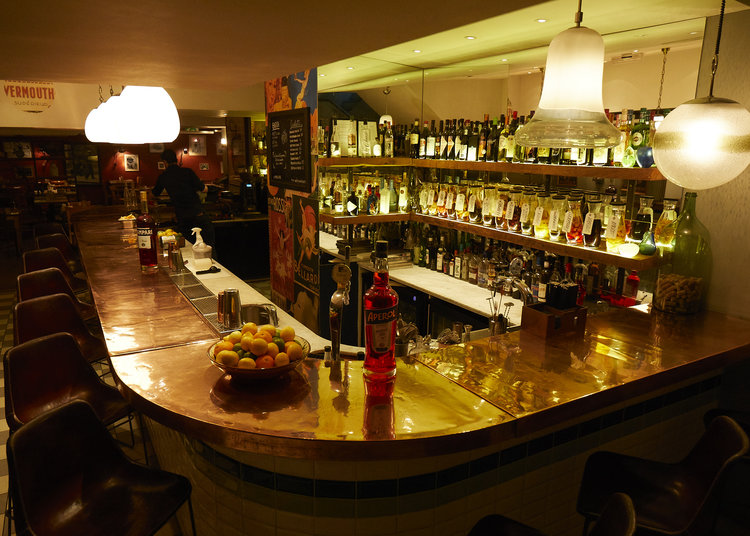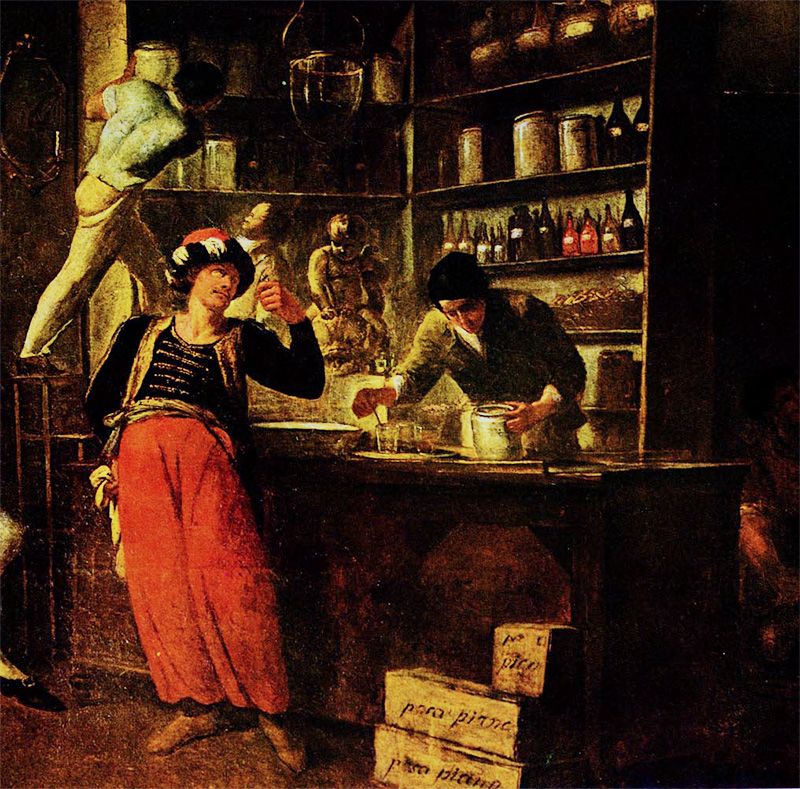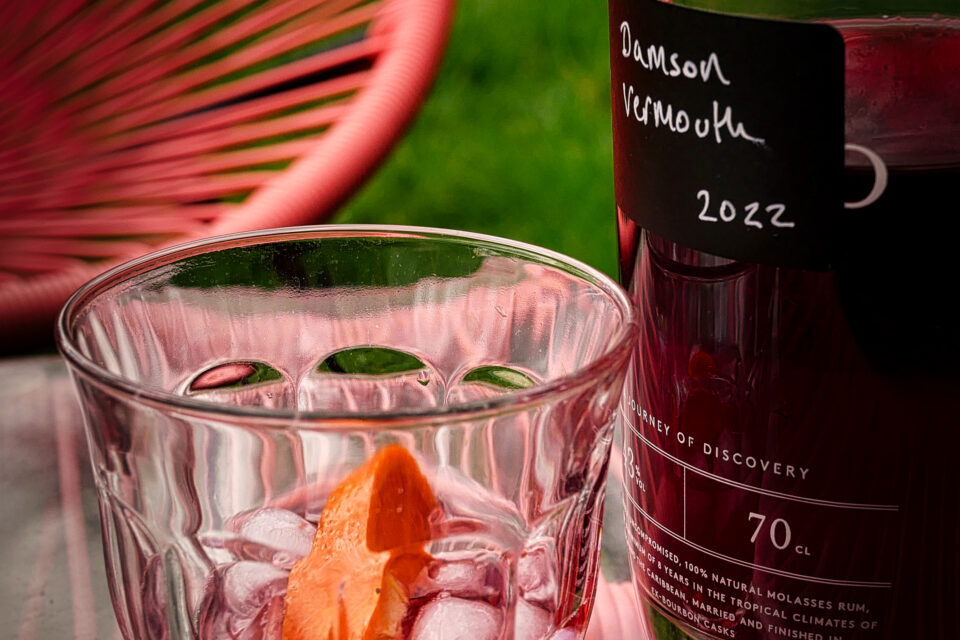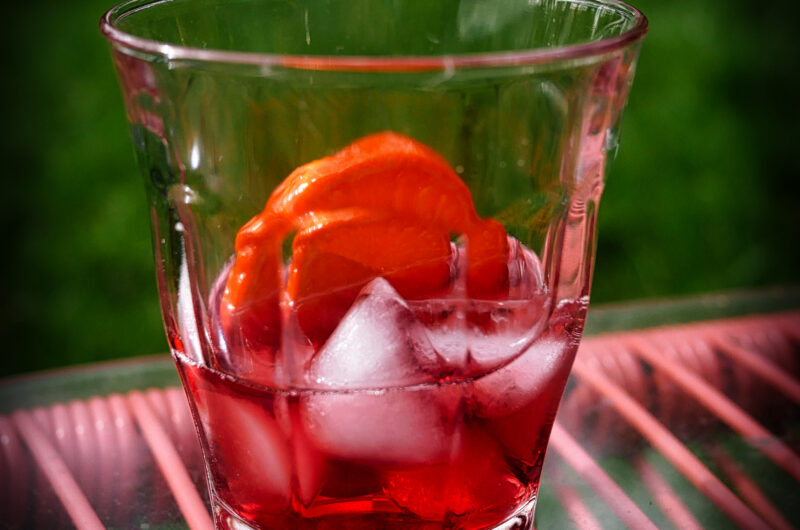This is a medium sweet red vermouth, great for sipping with a ice and a slice of orange, or use it to make a rather good Damson Manhattan. Given the unusual nature of mixing the sour fruitiness of damsons with vermouth flavourings, I think it’s a bit assertive for a classic Negroni.

My first experience with the bewildering variety of vermouths was during a brief easing of lockdown restrictions in the early autumn of 2020, and a visit with a friend to Mele e Pere in Soho, who claim London’s largest selection. We enjoyed a flight of 5 Italian vermouths, from drier to sweeter and heavier, with our meal in an almost deserted restaurant, and absolutely didn’t enjoy the stonking headaches the next day. Eventually I realised the joy that is a good Negroni (a crucial third of which is a sweet red vermouth), and also realised that a bitter, herbal Italian bottle is immune to the dangers of teenagers raiding the cocktail cabinet. Each bottle also comes with a history. Antonio Benedetto Carpano, studying to be a herbalist, created his formula in Turin in 1786, and it became popular with the King of Sardinia (who had a palace in Turin, as you do). This is still sold as Antica Formula with the same recipe, and credited as the first modern vermouth. Great as such origin stories are, Wikipedia reminds us that infused and fortified wines for medicinal purposes date back to the Shang dynasty in China and ancient Greece in 400 BCE, although those are harder to come by in your local supermarket.

For the damson vermouth recipe below I’ve used a variety of herbs I have growing in the garden (like rosemary, thyme, bay) and conifer sprigs, but you could substitute whatever similar things you have access to. Similarly, I selected some spices from the cupboard that I thought would work well together, but you could swap them. If I was making this again I’d likely make it a bit sweeter so that it work work better in cocktails (like a sweet Italian red vermouth). In order to do that, given the syrup is already quite concentrated, the easiest way would be to just make a bit more of it (for instance 150g sugar to 75g water), bearing in mind this would further dilute the alcohol a bit.
I think I’m justified in calling this a vermouth – by EU law, 75% of the final product must be wine, it must contain wormwood, and the alcohol can be 14.5-22%. As with my amaro, I’m basing the technique on the excellent 2020 article How to Make Vermouth and Amaro with Foraged Botanicals, by Mark Williams of Galloway Wild Foods, although going somewhat off-piste with the damsons. Incidentally, you’ll see in the photo I am reusing a quality bottle that was originally a fine sipping rum called Equiano. Much too nice for the kids to have finished one evening.
Damson Vermouth
1
litreA medium-sweet, fruity, mildly bitter and aromatic home-made red vermouth infused with damson plums.
Ingredients
- Wine infusion
750ml white wine (something light – I used Pinot Grigio)
½ tsp wormwood
½ tsp angelica
½ tsp gentian
½ tsp fennel
½ tsp coriander seeds
1 clove
1 star anise
1 piece cassia bark or cinnamon
5-10 bay leaves
Sprig of rosemary
Sprig of thyme
Sprig of conifer (I have juniperus squamata although not convinced it adds much – should try spruce tips perhaps)
- Spirit infusion
250ml vodka
200g damsons
- Syrup
100g granulated sugar
50g water
- Final maceration
180g damsons
1 tbsp oak chips
Directions
- Infused spirit
- Add the damsons to the vodka and leave to infuse for at least one week
- Filter the vodka and discard the damsons (you can use a cheesecloth or coffee filter)
- Aromatised wine
- Mix the bottle of wine and all of the wine infusion ingredients in a large pan
- Bring up to around 60-70°C (a sugar thermometer lets you measure this – it needs to be hot but not bubbling and definitely not close to boiling)
- Cover and hold at this temperature for 25 minutes
- Allow to cool and then leave for a couple of hours
- Filter the wine with a cheesecloth or coffee filter
- Syrup
- Mix the sugar and water (I use scales but 50g water is the same as 50ml)
- Heat until the sugar is completely dissolved
- Allow to cool
- Final maceration
- Mix the armonatised wine, the vodka and the syrup in a jar (I use 2l kilner jars)
- Add the final damsons
- Optionally add some oak chips (some vermouths are aged in oak barrels)
- Leave to infuse for at least a couple of months
- Filter out the damsons and oak, bottle and enjoy your damson vermouth!
Notes
- Most people advise that vermouth is stored in the fridge and consumed within a couple of months as it will eventually oxidise which will impair the flavour. You could also try using vaccum stoppers that are sold for keeping wine fresh.
- I tend to gather my damsons in August and then freeze them. The recipe works perfectly well with frozen fruit.

